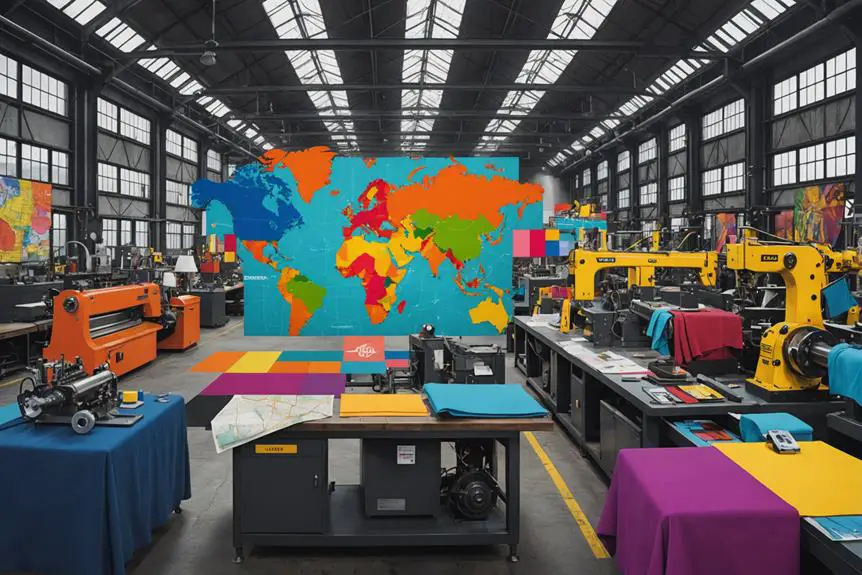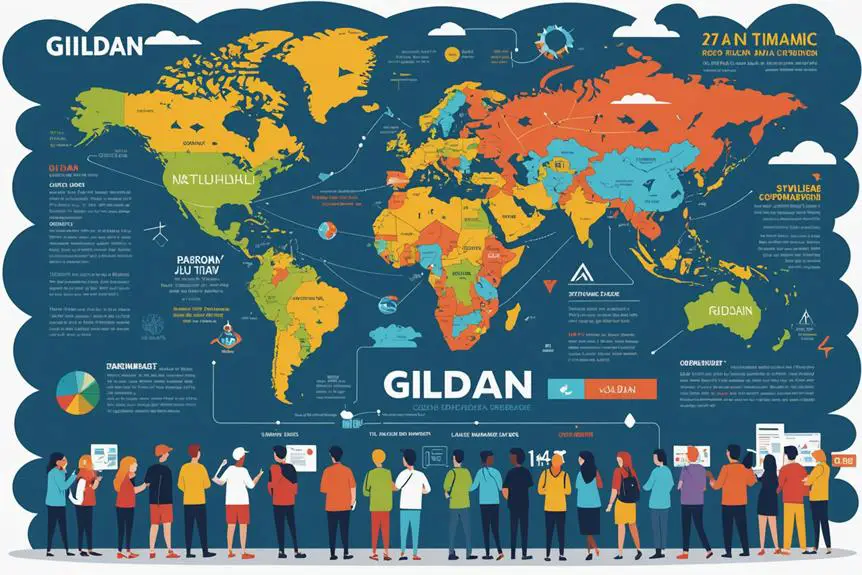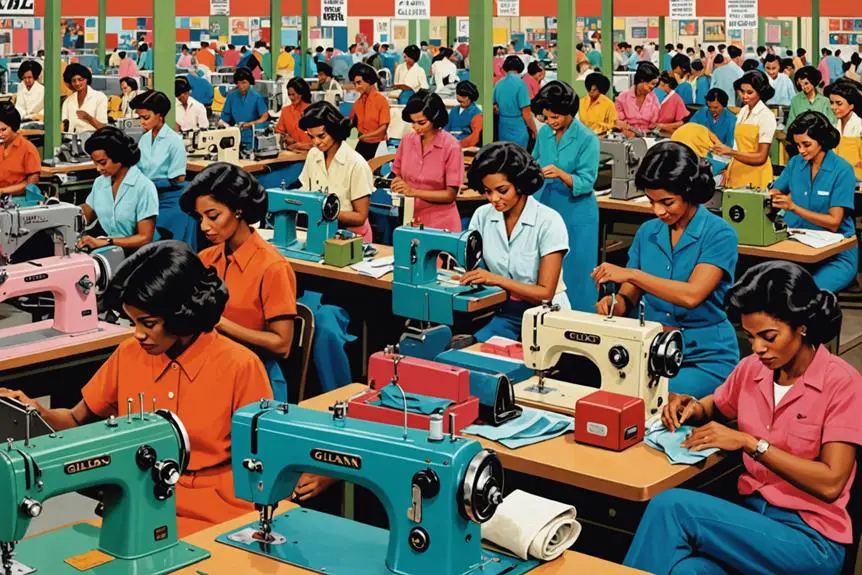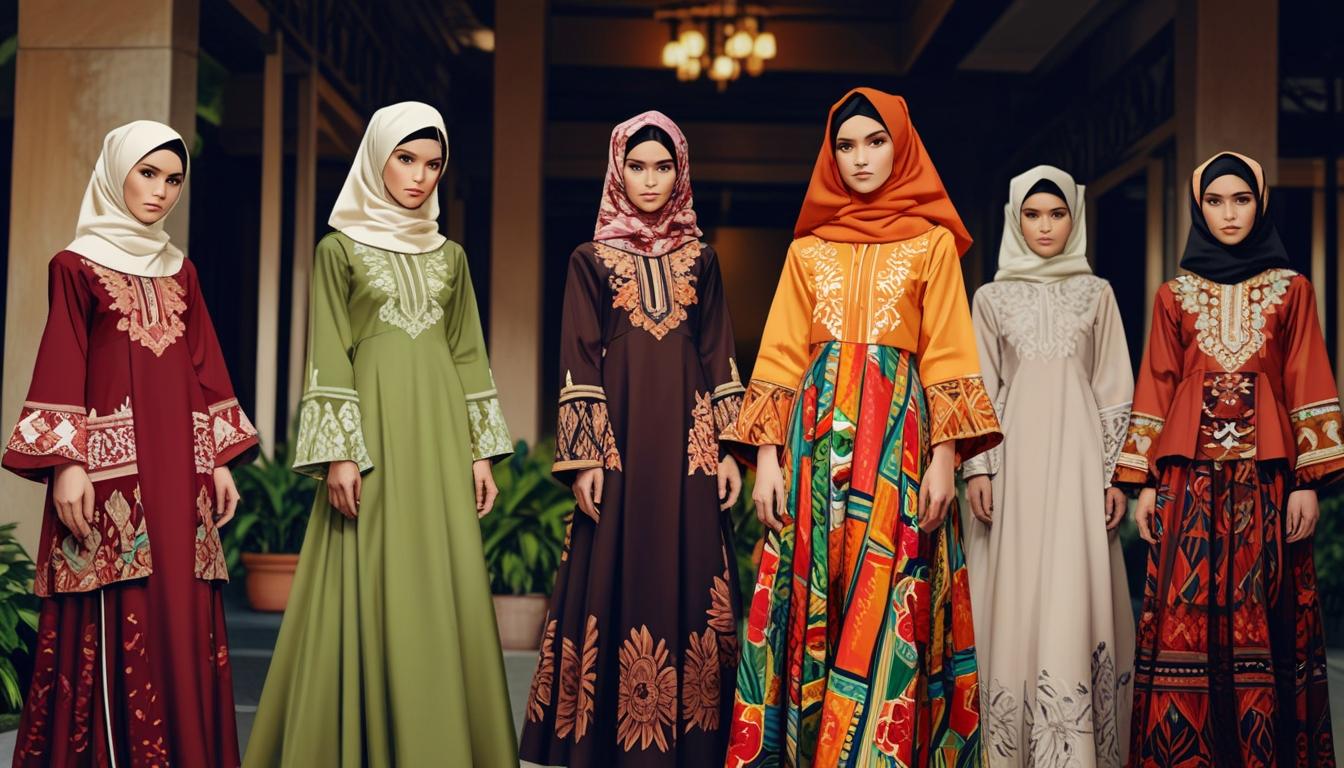Gildan, a prominent player in the fashion industry, began its journey in 1984 as a fabric supplier founded by Glenn and Greg Chamandy in Montreal. Over the years, the brand has evolved into a leading name in blank activewear, with a strong focus on t-shirts and fleeces. The company made a significant leap in its growth trajectory with its public offering in 1998, which catalyzed its international expansion. Through strategic acquisitions, including the notable purchase of American Apparel in 2017, Gildan has diversified its market presence and reinforced its commitment to sustainability, emphasizing responsible cotton sourcing among its practices. Despite its successes, the brand has faced scrutiny regarding its labor practices. Understanding these complexities is crucial to appreciating Gildan's intricate journey and its influence on the contemporary apparel landscape.
Company Overview

Gildan Activewear Inc., founded in 1984 by brothers Glenn and Greg Chamandy, has evolved considerably over the decades, transforming from a fabric producer for children's apparel into a powerhouse in the blank activewear market. As a Canadian company headquartered in Montreal, Gildan specializes in manufacturing undecorated apparel, including t-shirts, sport shirts, fleeces, and socks. By 1994, Gildan had shifted its focus to become a leading wholesaler of 100% cotton t-shirts, marking a considerable pivot in its business strategy.
Going public in 1998, Gildan is now listed on both the Toronto Stock Exchange and NYSE MKT under the ticker symbol GIL. This move not only solidified its financial position but also allowed for further growth through strategic acquisitions. The company enhanced its brand portfolio by acquiring American Apparel in 2017 and Comfort Colors in 2015, which considerably bolstered its market presence in the activewear industry. With approximately 44,000 employees across various manufacturing facilities, primarily in Honduras and the Caribbean, Gildan continues to thrive as a leading player in the global apparel market, driven by innovation and an unwavering commitment to quality.
Company Origins and Development
How did a small fabric supplier evolve into a global leader in the activewear market? Gildan Activewear, founded in 1984 by Glenn and Greg Chamandy in Montreal, initially focused on supplying fabric for children's apparel through their company, Harley Inc. However, the closure of Harley Inc. in 1992 allowed Gildan to pivot its strategy, concentrating on manufacturing and distributing 100% cotton T-shirts. This strategic shift was marked by an emphasis on high-quality garments, which later became a hallmark of the brand's identity, as reflected in their evolution of Gildan tags. By 1994, Gildan had established itself as a leading distributor within the apparel industry.
In 1997, Gildan took a significant step by opening its first offshore sewing facility in San Pedro Sula, Honduras, employing 1,200 workers and marking the launch of its international manufacturing operations. Gildan went public in 1998, listing on the Toronto Stock Exchange and the NYSE MKT, which fueled its growth.
Key factors in Gildan's development include:
- A shift from children's apparel to T-shirts
- Investment in offshore manufacturing for cost efficiency
- Strategic public offering to support expansion
These decisions solidified Gildan's position as a vertically integrated powerhouse in the activewear market.
Growth and Market Expansion

The trajectory of Gildan Activewear exemplifies a remarkable journey of growth and market expansion within the competitive apparel industry. Founded in 1984, Gildan evolved from fabric production to a leading distributor of 100% cotton t-shirts in the U.S. by 1994. The establishment of its first offshore sewing facility in Honduras in 1997 marked a pivotal step in its global manufacturing strategy, employing 1,200 workers and laying the groundwork for future international ventures.
Going public in 1998 catalyzed Gildan's expansion into the European market by 2000, solidifying its presence in the international apparel industry. This strategic approach was further enhanced by its acquisitions, particularly the purchase of American Apparel in 2017, which greatly bolstered Gildan's brand portfolio and market reach.
Strategic Acquisitions
Strategic acquisitions have played a crucial role in Gildan's evolution, allowing the company to diversify its product offerings and enhance its market presence. By strategically acquiring brands, Gildan has not only expanded its reach but also solidified its position in various segments of the apparel industry.
- The 2012 acquisition of Anvil Holdings strengthened Gildan's environmentally-friendly apparel lines.
- Gildan's move to purchase Comfort Colors in 2015 opened the door to the vintage garment dye market, appealing to consumers looking for unique options.
- Acquiring American Apparel in 2017 enriched Gildan's brand portfolio while focusing on wholesale distribution, despite excluding retail locations.
Through acquisitions like PEDS Legwear in 2016, Gildan has further diversified its product line, particularly in the legwear market. Each strategic decision has contributed to a thorough brand strategy that not only enhances Gildan's market presence but also aligns with consumer trends. By leveraging these acquisitions, Gildan positions itself as a versatile player, capable of meeting diverse consumer demands while maintaining a competitive edge in the ever-evolving apparel landscape.
Commitment to Sustainability

Gildan's growth through strategic acquisitions naturally aligns with its robust commitment to sustainability, reflecting a broader vision that seeks to harmonize business success with environmental stewardship. Launched in early 2022, Gildan's Next Generation ESG strategy underscores this dedication, enhancing sustainability performance across its operations. By publishing annual ESG reports since 2008, the company consistently demonstrates transparency in its commitment to sustainable development and ethical practices.
You'll find that Gildan sources approximately 90% of its cotton from the U.S., ensuring high-quality materials while bolstering local agriculture. This strategic cotton sourcing not only supports sustainable farming but also minimizes environmental impact. The company's innovative Biotop system for natural wastewater treatment further exemplifies its commitment to environmental responsibility.
Moreover, Gildan adheres to an extensive labor practice code, emphasizing compliance with international labor standards and the protection of workers' rights. By prioritizing ethical labor practices, Gildan not only enhances its brand reputation but also fosters a workplace culture that values fairness and respect. Fundamentally, Gildan's commitment to sustainability is deeply integrated into its operations, fostering a future where business and environmental integrity coexist.
Advertising and Sponsorships
Frequently, companies like Gildan leverage advertising and sponsorships to enhance their brand visibility and connect with consumers on a deeper level. By investing $25 million in marketing initiatives, Gildan demonstrated a commitment to innovative strategies that resonate with various audiences. Their notable Super Bowl advertisement in 2013 and the sponsorship of the Gildan New Mexico Bowl since December 2012 exemplify how Gildan aligns its brand with sports and community events.
Here are a few key insights into Gildan's approach:
- Diverse Channels: Gildan utilizes broadcast, print, digital, and event marketing to reach consumers effectively.
- Star Power: Partnering with Blake Shelton as a spokesperson enhances brand appeal, tapping into his broad audience.
- Innovative Campaigns: The 2017 commercial featuring older men promoting modern underwear showcases Gildan's ability to challenge norms and connect with diverse demographics.
Through these marketing initiatives, Gildan not only boosts its brand visibility but also creates lasting connections with consumers, reinforcing its position in the competitive apparel industry.
Labor Rights Controversies

While Gildan's marketing strategies have successfully enhanced its brand presence, the company has faced significant scrutiny regarding its labor practices. Allegations of labor rights violations, particularly in its Genesis, S.A. factory in Haiti, highlight serious concerns over retaliatory dismissals against union leaders. This isn't just an isolated issue; reports uncover troubling working conditions in Gildan's offshore manufacturing facilities across Central America and the Caribbean.
Despite Gildan's labor practice code, established in 2006 to promote ethical operations, critics argue that enforcement and effectiveness remain inadequate. The scrutiny intensifies within the broader context of global supply chains, where the need for improved labor rights and union protections is paramount. The Fair Labor Association has been vigilant, monitoring Gildan's adherence to labor standards and revealing persistent issues regarding employee rights.
These controversies illustrate the complexities of balancing operational efficiency with ethical responsibilities. As you consider Gildan's position in the apparel industry, it becomes clear that addressing these labor rights challenges is essential not only for the company's reputation but also for the well-being of its workforce.
Leadership and Future Directions
With a recent shift in leadership, Gildan Activewear Inc. stands at a significant crossroads, poised to redefine its strategic direction. The change from Glenn J. Chamandy to Vince Tyra as CEO marks a pivotal moment in the company's journey. During this period, interim president Craig A. Leavitt helped navigate internal management changes, but ongoing internal conflicts among stockholders have raised concerns about Gildan's future stability.
As Gildan begins this new chapter, it's essential to evaluate the implications of the leadership change:
- Restructuring Initiatives: The potential for divestiture strategies suggests a shift towards more streamlined operations.
- Strategic Focus: Under Vince Tyra, the company may prioritize adapting to market demands, enhancing competitiveness.
- Management Stability: The special committee review highlights the necessity for cohesive leadership to align stockholder interests.
These elements will be central in shaping Gildan Activewear's responses to market pressures and internal challenges. The success of this management change hinges on how effectively the company can unify its vision while addressing the concerns of its stockholders, ensuring future stability and growth.
Frequently Asked Questions
What Is the History of Gildan Company?
To understand Gildan's history, consider its evolution from fabric production to a major player in the apparel industry. It's adapted through strategic acquisitions and international expansion, shaping its robust market presence today.
What Is the Gildan Controversy?
Gildan's controversy stems from allegations of labor rights violations, including retaliatory actions against union leaders. Ongoing scrutiny highlights concerns over working conditions and ethical practices, prompting demands for better labor rights and protections for employees.
What Does the Name Gildan Mean?
The name "Gildan" signifies a commitment to quality and innovation in apparel. It reflects the brand's focus on basic activewear, emphasizing sustainability and becoming synonymous with bulk manufacturing, particularly in screen printing and customization.
Does Gildan Use Child Labor?
Gildan doesn't use child labor. They actively enforce strict policies against it, ensuring all suppliers comply with ethical labor standards. Their commitment to safeguarding workers' rights reflects a strong stance on social responsibility and ethical practices.




